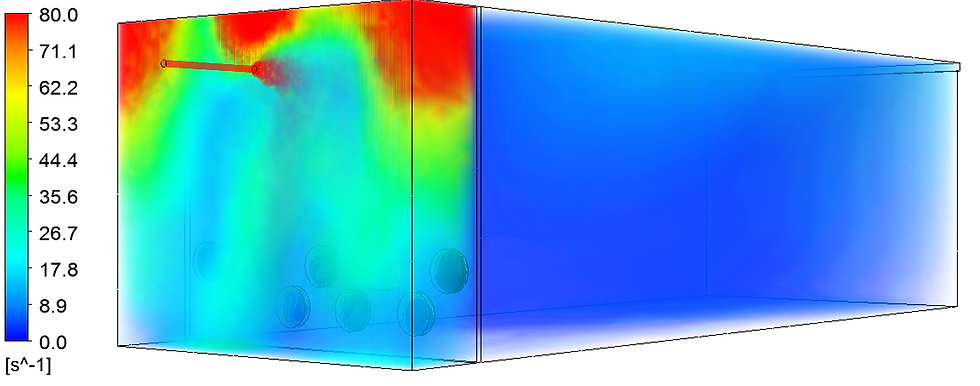Knowing the G-value in a reactor like a sedimentation basin would be beneficial since ideally we would want to minimize turbulent flows that could potentially break-up incoming floc. It is common for basins to have diffuser walls in order to create a uniform flow across the basin. Initially I thought this was going to be an easy task since it was simply a matter of plugging some numbers into the head loss through an orifice equation. However, things quickly started getting messy and complicated when I tried doing that. Fortunately, with computational fluid dynamics, this it was simply a matter of modeling a system and running a quick simulation. My model was based on a pilot-scale sedimentation basin that had submerged orifices.

My hypothesis was that the orifice equations weren't applicable for this case since there was probably more energy in the water coming in compared to the energy from the static pressure head used in the orifice equations. The figures below show the G-values at the the orifice entrances and throughout the basin. The maximum computed G-value at the orifice entrance was approximately 7 [1/s].


Next I ran a simulation using the same boundary conditions but changed the position of the inlet pipe. Interestingly, when the inlet was approximately aligned with an orifice, the maximum G-value increased by a factor 6 at the the orifice entrance. Obviously, this also created preferential flows and effected the hydraulic efficiency of the basin.


Finally, I moved the inlet back to it's original position but changed the diameter of the inlet from 1.5" to 0.25" while keeping the flow rate constant. What happened was even more surprising. The maximum G-value at the orifice entrance was about 13x higher than the original basin.


This implies that the inlet design of a basin is of practical importance and can have an effect on the G-values observed at the orifices. The figure below shows the G-values in an existing full-scale sedimentation basin. The inlet of the basin has a diffuser wall with gaps for the water to flow through. The results show that the G-values are extremely high at the openings and that this could potentially break-up floc as it enters the basin. The design of a diffuser wall should take into account the G-values encountered at the openings as well as distribute the flow evenly across the basin.


Comments